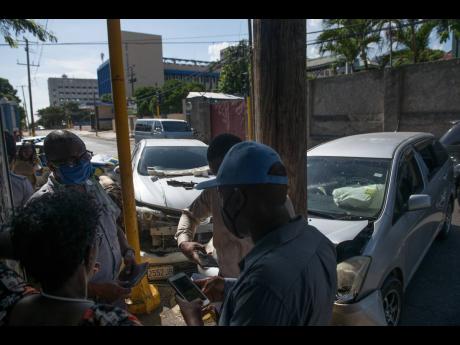Be patient … read the road ahead
The concept of patience is both a virtue and a necessity, especially in these COVID-19 times. Motorists ought to be, alert, aware, awake and exercise a great deal of patience as we traverse the busy streets. Some of us drive out suddenly, others bore themselves into small spaces, still others honk their horns, with the hope the driver in front gives passage immediately.
“If we exercised more patience in our driving, there would be far less incidents and accidents on our roads,” says Rev Dr Wayneford McFarlane. It was the great writer Edmund Burke who said, “Our patience will achieve more than our force.”
Patience is a quality that only life can teach. As motorists, we need only to open our eyes, be patient, read the road ahead, and observe carefully the motor vehicle in front.
The two-second rule is not the only technique a driver should use when following other cars in traffic. “Avoid looking only at the rear bumper of the car ahead,” advises Norris Christian, driver instructor.
“Look over, through, and around the car ahead,” he adds. According Christian, be alert for brake lights and for anything that might cause the car ahead to stop. Also try to identify the pedestrians, so you will be prepared and ready for the car ahead to stop.
Our motorists should check ahead for possible problems on hilltops and in curves, so you can adjust speed and following distance. Watch for brake lights ahead as early warnings to stop or slow down. Christian also explained that knowing where sudden stops might occur will help you in areas of greatest danger.
The four most common areas are:
1. Intersections controlled by signals.
2. Parking lot entrances.
3. Lanes next to parked cars.
4. Expressway entrance and exit.
Another area of concern is texting and driving. Imagine that you are checking the mirror or searching for a phone number for a few seconds. Now, if the driver ahead slams on the brakes while you are still searching, by the time your eyes return to the road, it may be too late to stop.
Other minor distractions include:
A. Eating while driving.
B. Watching children or pets in the vehicle.
C. Reaching for money in pockets while driving up to the toll booth.
D. Trying to fasten the seat belt while driving.
E. Reaching across the seat to close a door or look in the glove compartment.
F. Staring at passengers.
So here is what to do to prevent a collision:
- Ensure that the situation ahead has no hazards before you look away.
- Take several split-second glances rather than one long look.
- Ask a passenger to help with street names, house numbers or other navigational needs.
- Keep a good posture while driving.
- Adjust the seat so that you can reach the pedals easily. Your position when properly seated should allow you to see clearly and allow you to glance to the rear.
It is to be noted that when a rear-end collision occurs, the driver to the rear is usually at fault. However, an error made by the lead driver may have actually contributed to the rear-end crash.

